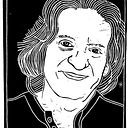Member-only story
The Creepy World of Ventriloquism
While teaching a printmaking class at a senior home, I encountered a woman named Phoebe who’d lost her right arm. She shared her story. She’d been a ventriloquist of some renown in the early 1970s, appearing with her puppet Rudy on television programs like Captain Kangaroo and Hobo Kelly. By 1980 her career slowed and the TV appearances ended. Her husband convinced her to give up ventriloquism and she settled for a job as a secretary.
“I put Rudy in a big wooden box and stored him in the back of the closet. At night I heard him screaming, ‘Let me out, let me out.’ After a few weeks Rudy started threatening me, saying things like ‘you’ll be sorry’ or, ‘if you don’t let me out, I’m going to hurt you.’ I cried every night. I told him how sorry I was. But I never let him out.”
In 1981, Phoebe felt pain in her right arm, her puppet arm. She was diagnosed with advanced bone cancer. She had emergency surgery and her arm was removed at the shoulder. Her life was saved, but her performing career was over. “I killed Rudy,” Phoebe said. “He tried to kill me.”
Ventriloquism dates back to classical Greece. Early ventriloquists were called “engastrimyths” (gaster for stomach, mythos for speech). Onlookers believed ventriloquists had demons in their stomach belching forth language from the host’s mouth.
